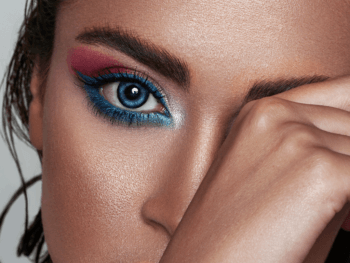
A Guide to Debunking Non-Invasives, the Way of the Future
You may have overheard your girlfriend or colleague at work mention medical spas, but frankly, the word “medi spa” is tossed around so loosely that you may not know the true benefits you can get from a visit. Whether you are looking for a cosmeceutical-grade skin care line for your skin problems, or would like to get rid of your age lines, there are important basics you need to know to get the doctor, treatment and results you want and need.
Unlike a traditional spa aimed at relaxation and aesthetic treatments including manicures, facials, and waxing, these spas are run by medical staff including doctors and nurses, who administer “treatments such as laser hair treatments, IPL treatments, microdermabrasion, photofacials, and if a doctor is present, injectables including Botox and fillers, aggressive chemical peels and skin tightening,” says Dr. Francine Gerstein of True Medi Spa, a Toronto-based spa she owns with her business partner Dr. Saibil. Plus, skincare with pharmaceutical ingredients not available over the counter are prescribed to clients with sensitive skin, or with conditions such as hyperpigmentation, severe acne or as follow-up enhancers to an invasive treatment.
On-the-Go Quick Fix
“Within the last year there has been a 99.9% increase in the use of non-invasive treatments,” says Christine Paggos, Medical Consultant for SkinVitality, a medical spa with five locations across the GTA including Toronto, Ajax, Kitchener, Mississauga and Richmond Hill. The popularity of medical spas has grown, explains Paggos, because “people want to see results, but they don’t want to take the time off to do it. The convenience of non-invasive treatments (as opposed to cosmetic surgery) makes them attractive options. No one knows except for you.” For example, some treatments, such as fillers, can be given over a lunch hour without any physical evidence.
Race Against Time
Both men and women revved up to fight the natural process of aging seek services at medical spas.
“Men visit True Medi Spa on a regular basis with similar concerns to women. They are choosing hair removal treatments, chemical peels, microdermabrasion and fillers for a more youthful appearance, “says Dr. Gerstein. At SkinVitality, men make up about 10 to 15% of the spa’s regular clientele. Increasingly, younger women in their 30’s are becoming regular consumers of fillers and skin resurfacing treatments to prevent signs of aging, such as wrinkles.
Early signs of aging include fine lines, freckling and greater visibility of skin pores. Later signs include age spots, deep folds, spider veins and rough skin. “A wrinkle is a fold, ridge or crease in the skin that appears as a result of the aging process due to factors such as habitual facial expressions, aging, sun damage, smoking, poor hydration, and various other factors related to one’s lifestyle,” says Ranvir Rai, a Toronto pharmacist. With the demands in society and the faster pace of life, combined with some individuals’ hereditary dispositions to reduced elasticity in the skin, medical spas can play a helping hand in maintaining a younger appearance.
The Dark Skin Difference
But before booking in for one of many non-invasive cosmetic procedures offered at medical spas, educate yourself about the place you are going and the treatments you want. Ignorance may be bliss, but to avoid complications, inform yourself. Dr. Jaggi Rao, a board-certified dermatologist based in Calgary and Linda Ewaschuk, a cosmetic surgery consultant both advise South Asian men and women to go to a spa where the practitioner is experienced with darker skin clientele: “Don’t lose your critical judgment just because someone is recommending a treatment. Do your homework when you are considering any procedure.”
The higher level of melanin in South Asian skin tones means the skin is more susceptible to burns from laser treatments and chemical agents used in peels. “Although difficult, effective laser therapy in patients with darker skin can be achieved. When determining a treatment protocol in consultations, make sure the proper laser energy and wavelength are used,” says Rao. A laser with a longer wavelength, such as the IPL laser, decreases the chance of burns as it passes through the dermal layer of the skin straight to the hair follicle. So ensure the medical spa you choose has the right equipment. “Also, microdermabrasion may be a safer option than traditional chemical peels, unless the clinic is fully versed in treating darker skin types,” says Rao, in order to avoid unwanted side effects, such as hyperpigmentation or keloid scars.
Knowledge Is Results
“Overall, know what procedure is being performed on you, who performs it, what their credentials are and how long they’ve been doing it. Plus, consent forms should always be given to you before the treatment commences,” advises Ewaschuk.
Practitioners at medical spas should be knowledgeable and privy to answering your questions. Dr. Gerstein encourages her clients to ask the following:
- Am I a good candidate for this treatment? Why?
- When should I come back for a follow-up?
- Are there any side effects? If so what are they?
- What kind of results should I expect?
According to Paggos, the question of results is most crucial for both the client and practitioner. If a client misunderstands the expected results attached to a given treatment they may walk out disappointed. For example, the VelaShape is not a weight loss treatment. “So if a woman who just had a baby has a lot of overhanging skin, then we would recommend a tummy tuck and then the VelaShape to complement it.”
It’s important to stay realistic about possible results and to stay patient when some procedures demand a cycle of repeated visits. “By finding a well-established and reputable spa you’ll be happy,” says Paggos. “Non-invasives are the way of the future and we at SkinVitality are riding that wave as we started with them years ago.”
BY AMANPREET DHAMI
PUBLISHED IN THE LIVE BEAUTIFUL ISSUE, MARCH 2011














































































































